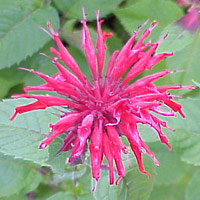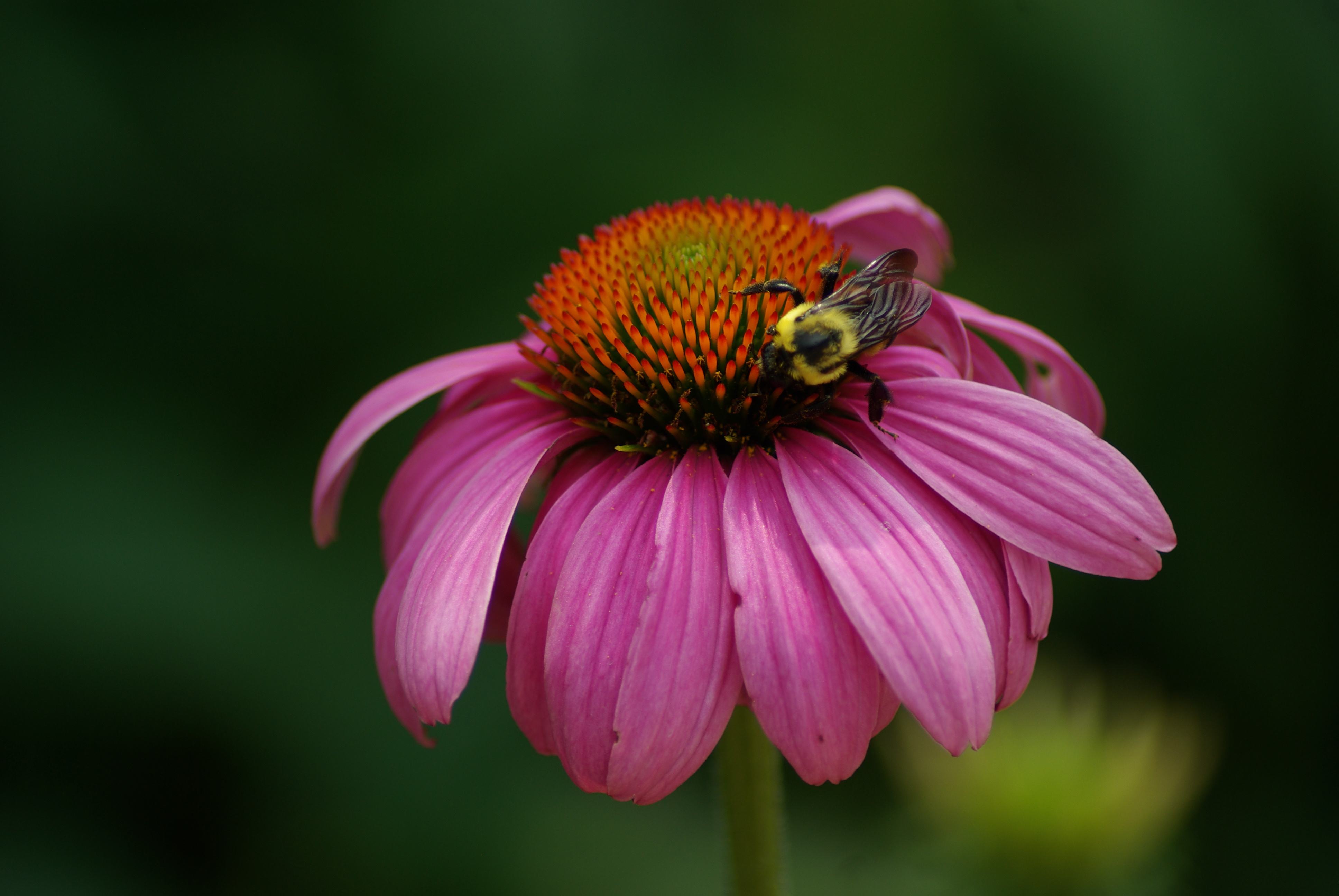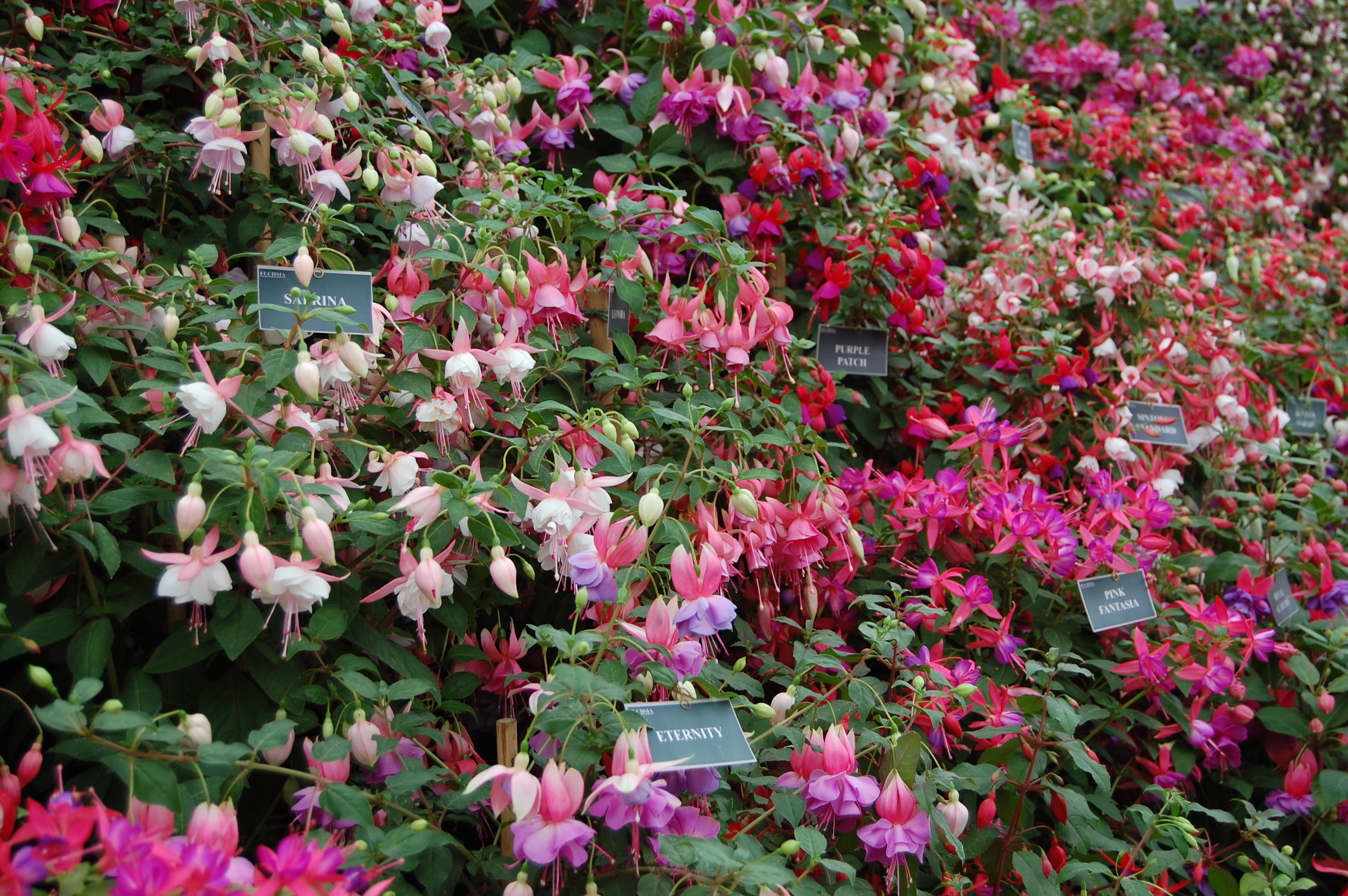 |
| Cosmos in bloom |
-As food!
-They are pretty
-Attract and provide food/homes for beneficials
-Repel pests, or trap crops
-Reduce weeding
-Reduce erosion
-Cut flowers
-Smell wonderful
-They are pretty!
The only reasons not to plant flowers are the costs; space constraints; or that you hate pretty things. ;)
 | ||
| Bee balm or Monarda Didyma or wild bergamot attracts pollinators and makes a tasty tea as well. |
 |
| Marigold |
Marigold: Marigolds are one of the most commonly thought-of companion flowers. They are said to deter some common insect pests, including nematodes; marigolds are often companion planted with nightshade plants (i.e. tomato, potato, pepper, and eggplant). Some species are deer-, rabbit-, and rodent-resistant. The flower petals African marigold (Tagetes erecta) can be used as a yellow food coloring. Marigolds are a food plant for butterflies and certain Lepidoptera caterpillars.
On the down side, marigolds do NOT smell particularly pleasant, and their roots emit antibacterial thiophenes so should never be planted near legume crops.
 |
| Potted nasturtium (center) |
Nasturtium: Nasturtiums are my favorite garden flower. They grow as beautiful flowing carpets of green with bright yellow, orange, and red flowers. They actually prefer to grow in poor soil; rich soil will give them abundant foliage but reduce flower production. Nasturtiums make a great ground cover to keep down weeds in areas you are not ready to plant, or around bulbs that won't come up for a while. They don't require much nutrition, have small root systems, self-sow year after year, and are very inexpensive seeds. Most importantly, the leaves and flowers are edible (they have a mild peppery taste); and they repel a great many cucurbit pests, like squash bugs, cucumber beetles, and several caterpillars. They have similar benefits for brassica plants, especially broccoli and cauliflower. They serve as a trap crop against black fly aphids. They also attract beneficial predatory insects.
 |
| Red Yarrow |
Yarrow: Yarrow flowers in a flat cluster of tiny white, yellow, or pink blossoms. Yarrow has been used as a vegetable in the past, the younger leaves can be cooked similar to spinach or added to soups. It has a sweet, slightly bitter flavor. It has also been used medicinally as a tonic, and to treat wounds. Pasture grasses traditionally contained a small proportion of yarrow, because it's leaves were particularly high in certain minerals, thus preventing certain mineral deficiencies in cattle. It repels bad insects and attracts predatory wasps, ladybugs, and hoverflies. It improves soil quality and its leaves are considered to be good fertilizer and a beneficial additive to compost. It is said to improve the health of plants nearby, and starlings use it to line their nests (inhibiting the growth of parasites). Common Yarrow can be invasive. Wikipedia has some great information on the extensive history and uses for yarrow.
Sunflower: Both a beautiful annual flower, and an edible; the sunflower's seeds and oil are eaten, while the leaves can be fed to livestock, and the stems can be used in papermaking. The seed is often used in bird seed blends. Sunflower is also used in phytoremediation to extract toxic ingredients from soil, such as lead, arsenic and uranium. Sunflowers are allelopathic, meaning they inhibit other plant growth. This can be a good thing! Plant sunflowers in a sunny area that has major weed problems, or around the outskirts of your garden beds to protect from encroaching weeds. Don't plant them inside the beds though, the roots exude a substance that will inhibit your plants' growth. I am seriously considering growing them in my blackberry zone in hopes that they will kill off the remaining blackberries.
Coneflower (Echinacea): Echinacea produces large, often purple, daisy-like flowers. Medicinally it is used primarily as an immune booster, but also for several other purposes. It also attracts beneficial insects to the garden.
Fuchsia: In my area fuchsia are commonly grown as trailing container plants, and annuals. Fuchsia are actually perennial plants, though not especially hardy. Besides being absolutely gorgeous, fuchsia are major attractors of butterflies, bees, and hummingbirds; they smell great, look better, and if you are going to plant them anyway you may as well do it near your vegetables.
Catmint: Nepeta sp. include common catnip as well as several other catmints. I'm sure most people know the purpose of planting catnip as far as cats go. Catmints also produce very pretty flowers, and are used medicinally for humans. It contains a chemical that is a strong repellant to mosquitoes, cockroaches, termites, and flies. Planting it away from your vegetables can keep your cats out of the area, while planting it within the garden can repel certain insects. While it is a perennial, if your cats are like mine you may need to buy multiple plants each season because they roll on it so often the whole plant dies.
Hollyhock (Alcea sp.)/Mallow (Althaea sp.): Tall or short, gorgeous, biennial or short-lived perennials. A beautiful cut flower and attractor of many beneficial species. Hollyhocks will often self-sow and are very drought-resistant, they are a great way to brighten up a hot, dry corner of your garden. Ancient peoples used the Althaea species in both medicines and cooking. They are also considered one of the mainstays of a traditional cottage garden.
Morning Glory: Not to be confused with Field Bindweed, a perennial species of Morning Glory that is a nasty weed! Delicate flowers open in the morning and close in the evening, giving the morning glory its name. It is a slender vining annual, that will quickly spiral its way up a trellis to offer shade to plants, animals or people below. Morning Glory will happily cover up a chain link fence with a view of your neighbor's backyard and replace it with a view of green leaves and blue, pink, or white flowers. The trumpet-like cones of the flowers are particularly attractive to hummingbirds and butterflies.
Rose: Wondrously scented, beautifully flowered. The hips and petals are edible; they have been used in cooking, perfumery, winemaking, as floral arrangements, and are a symbol of love and beauty. A rose by any other name would smell as sweet... and would, obviously, attract plenty of pollinators. But roses have so many pests and diseases, right? Yes, and no. Hybrid tea roses are very needy little things that do require much care (and are very commonly found), they have been developed over many years for the showiest blossoms, leaving the plants themselves weak and of poor quality. The old garden roses, or heritage or historic roses, are far more independent. They tend to have highly disease-resistant foliage. Albas, Gallicas, Damasks, Centifolia, Moss, Portland, and China roses are all fairly safe older varieties of rose. Also the Tea, Bourbon, Hybrid Rugosa, Noisette, Hybrid Musk, and Hybrid Perpetual. Modern roses are more demanding and include the Hybrid Tea, Pernetianas or Hybrid Foetidas, Polyantha, Floribunda, etc. Before purchasing a rose to include in your garden take time to do your homework, they are well worth the effort to plant, but if you buy based solely on the picture you may find they are too much work and too sickly to work for you. (I did this once and was sorely disappointed by the sad sticks with even sadder single blossoms on top, I have since learned my lesson.)
Violet/Pansy/Johnny-Jump-Up/Heartsease: Viola tricolor actually has over 200 colloquial names. The wild variety has been cultivated into the many different sizes and colors of pansy we see in nurseries today. The pansy in its wild form has been used for centuries as medicine, as a plant dye, and the flowers are edible. They are hardy plants and will survive a short freeze even while blooming. Pansies are actually biennials, but are often sold the second year and treated as annuals. They may reseed themselves, but are susceptible to several diseases and a few pests. They certainly do bring a bright spark of color to the garden early on though, and I can't imagine a Spring without them popping up all over. The bonus is that pansies are not only pretty, but incredibly cheap! They do suffer from aphids, but in my mind that makes them a great trap crop. ;)
So, I know I didn't cover all of the great flowers available and all of the great advantages they offer in the veggie garden, but I did cover most of my favorites! If you have a favorite garden flower that you just couldn't live without, leave me a comment and tell me why it's so great. (I probably should have included something about Cosmos and Bee Balm, ... but I'm tired!)








I don't have a garden (yet), but I truly enjoyed reading this page. Keep sharing your knowledge and passion!
ReplyDelete